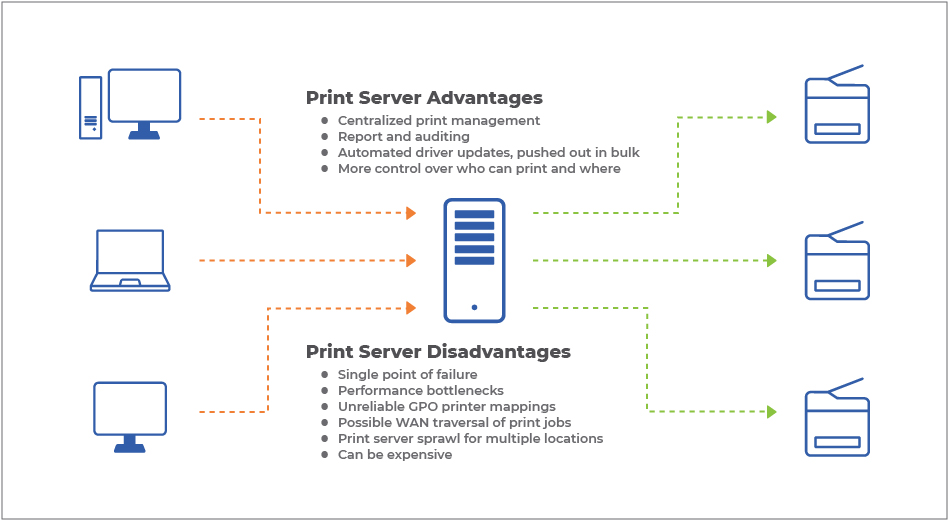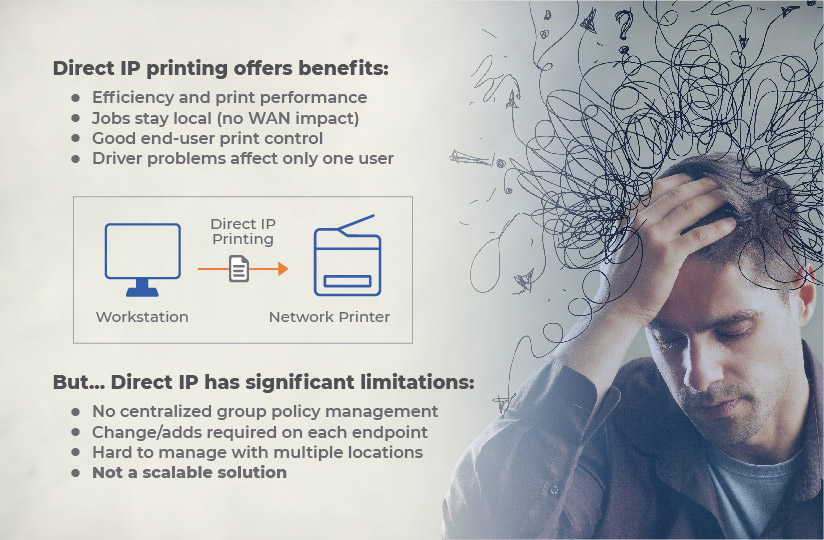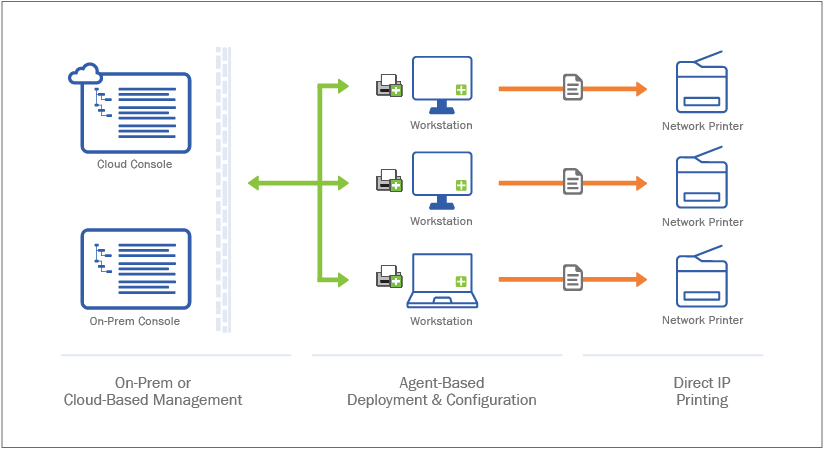Company Size Matters
If your company only has a handful of employees, the differences between using a print server and managing printing via direct IP are not that obvious. But as the organization grows, the pain points stemming from IT’s print management choices become evident.
Why Use Print Servers?
A print server can alleviate growth-related pain points because admins get centralized management for drivers, profiles, and print job auditing. You can set printer permissions and use Group Policy to map printers to users or workstations. They integrate with backend applications like EMR, CRM, and ERP and provide one print environment for the entire company. They also haven’t changed in functionality for decades, so they are easy to maintain and manage with the proper experience.
Where Print Servers Miss The Mark
Despite the few positives of employing print servers, it’s hard to keep up with them in the modern-day workplace because they require more maintenance than ever before. Company data is at risk if you fail to stay up-to-date with print server patch installations. Print servers also thrive with homogeneous printer fleets, meaning a printer fleet of mixed manufacturers can cause serious issues.
Additional negatives of print servers include:
Vulnerabilities: Print servers introduce many headaches and vulnerabilities. This means there is a single point of failure for everyone attached to that server. Organizations can expect performance and functionality issues when every printer driver lives, works, and spools on the same device.
Unreliable GPO Scripting: If there are multiple locations and only one print server, some of your print job traffic will traverse the WAN, often increasing the time it takes to print. On some WAN links, print job traffic can cause congestion and impact other communication across the link.
Price: You can install print servers at each location, but depending on how you deploy them, it can get expensive. Think of the hardware, licensing, and maintenance costs when using multiple print servers.
Limited Support: Windows print servers are typically set up for Windows clients only. There are ways to support Mac clients, but they come with limitations.

The Benefits of Direct IP Printing
With direct IP configurations, users are free to manage their printers and profile settings. You gain the advantage of local spooling and rendering print jobs which boosts security. And those jobs go directly from the workstation to the printer.
Direct IP printing is the most efficient way of printing and reduces overall network traffic. A driver issue or a job stuck in the queue will only affect one user instead of your entire organization. Direct IP is also cost-effective because there’s no additional print management hardware to buy or maintain.
Problems With Direct IP Printing
The decentralized nature of direct IP printing environments is often considered a pain point for IT teams. Admins can’t track costs or identify print job activity throughout the company without employing a third-party print management solution for assistance. Plus, direct IP printing isn’t ideal for hybrid or remote work environments that are constantly changing.
Additional pain points of direct IP printing include:
Time-Consuming Configuration: Printer drivers have to be configured on every workstation. Not to mention IT teams have to keep up with changes and driver updates.
Difficult Printer Replacement: A simple task of changing out a printer could require IT staff to touch all affected workstations, which is time-consuming. In dynamic environments, these efforts will inevitably fall behind, hurting user productivity.
Less Oversight and Management: Employees set their own printing rules without centralized group policy management, making it hard to keep up with print environments.
Not a Scalable Solution: When the number of printers in your fleet reaches the hundreds and thousands, the manual labor required becomes overbearing just to keep printing flowing.

Figure 2: Direct IP printing benefits and disadvantages
PrinterLogic: The Best of Both Worlds
What if I told you there is a way to get the centralized management benefits of a print server while maintaining the stability and efficiency of direct IP printing? You know, have your cake and eat it too.
PrinterLogic eliminates the need for print servers while providing a way to manage and install direct IP printers centrally. With PrinterLogic, you can easily convert your existing Microsoft print server environment to our serverless direct IP printing platform.
Have multiple print servers? We take care of that too.
You can also manage all printers and drivers from a single web-based Admin Console. PrinterLogic gives you more visibility into printing activity with an Advanced Reporting feature, allowing for a detailed view of all print jobs by users, departments, printers, and more.
PrinterLogic offers an on-premise solution and PrinterLogic SaaS, so you can choose which version works best for you without sacrificing features or functionality.


